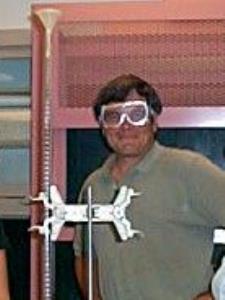
David L. answered • 03/05/14
Tutor
5
(23)
Chemistry Tutor
CS2 has 16 valence electrons (4 from carbon and 6 from each of the sulfurs). The best way to fit 16 electrons around three atoms (when the two on each end are the same element) is to use two double bonds. Note that the octet rule is satisfied, because the carbon has 8 electrons (4 in each double bond) and the sulfur has 8 electrons as well (4 in the double bond and 2 in each of two lone pairs, which are not shown here). With this arrangement, the formal charges are all zeros as well, which is nice.
S=C=S
The molecule is linear because the two groups of electrons (i.e., the two double bonds) will oppose each other with a bond angle of 180o. This linear arrangement is symmetrical and therefore nonpolar.
CF4 has 32 valence electrons (4 from the carbon and 7 from each of the fluorines). The best way to fit 32 electrons around five atoms is to put the less electronegative element in the middle. That would have the carbon at the center and the four fluorine atoms each attached to the carbon atom. This arrangement satisfies the octet rule because the carbon has 8 electrons around it (2 electrons in each of the four single bonds) The fluorines each have 8 electrons (2 electrons in the single bond and 2 electrons in each of three lone pairs on each F atom). With this arrangement, the formal charges on all atoms in the compound are zeros, which is nice.
It's hard to draw this one here, but it suffices to say that the four F atoms with their single bonds constitute four electron groups around the C atom, so a tetrahedral arrangement with 109.5o bond angles is expected. The tetrahedral arrangement is symmetrical and therefore nonpolar.
The sulfur atoms on CS2 are relatively large, and therefore the molecule has enough intermolecular forces to be a liquid at room temperature. It's quite volatile and boils at 115oF. It's a good nonpolar solvent.
CF4 is a very nonreactive gas with a very low boiling point, around –198oF. It is generally quite inert, but explodes upon contact with alkali metals.





